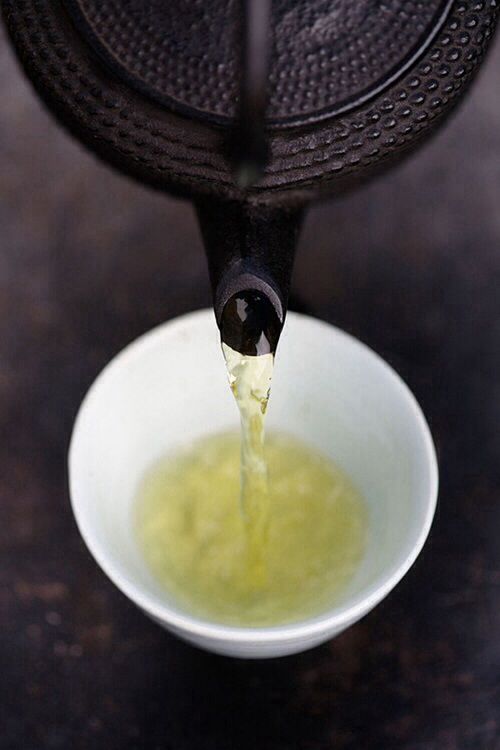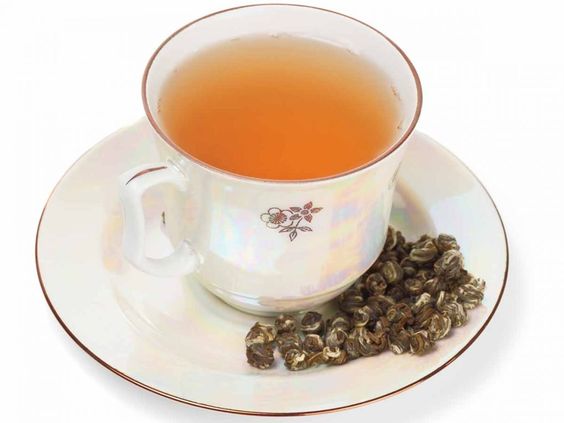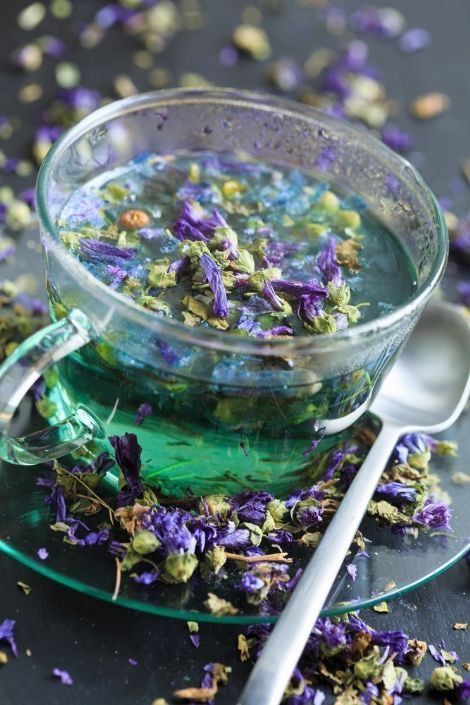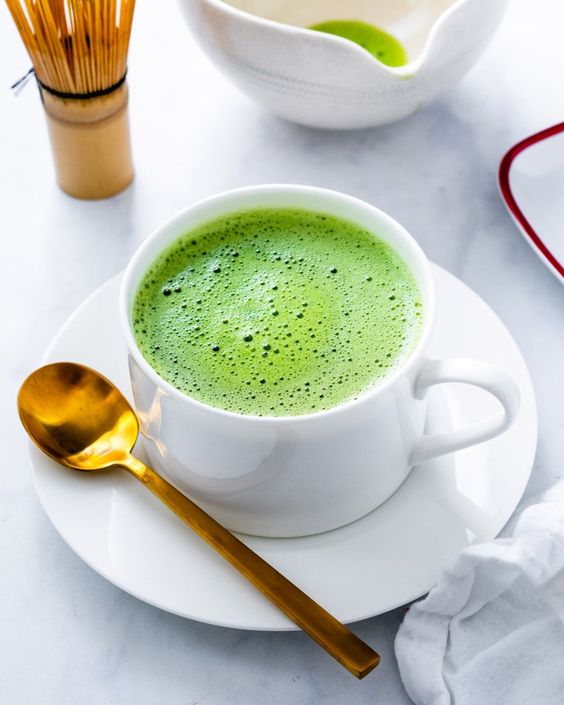 Competitor Backlink Hack – Steal Their Traffic. Legally!
Competitor Backlink Hack – Steal Their Traffic. Legally!
A Complete Overview of Different Varieties of Tea
Written by fashion point » Updated on: October 11th, 2024

The commonly known teas are black tea, green tea, white tea, oolong tea, pu-erh tea, purple tea, and herbal infusions. The large variety of teas and their numerous kinds can be confusing and even overwhelming at first if you are just trying them. What is exactly the difference between them?
Different Types of Tea
Actually, all types of "real" tea are grown and come from the same plant. The tea plant, which botanically is known as camellia sinensis, starts to grow from this plant. This particular species lived in southern China thousands of years ago, and for hundreds of years it has been grown and consumed by people. Camellia sinensis has two essential types: camellia sinensis var. sinensis, which is primarily grown in China and the Far East and has a mild and mellow character, and camellia sinensis var. assamica, which is typically grown in India and is more robust and stronger.
There are many reasons why tea looks and tastes different, and a few fruits may take different tea processes in a very long time. Nowadays, there are six main tea groups, some with characteristic differences and ways of making them.
1. Black tea

Black tea is the most common type of tea that many newcomers have to try. You can get a black tea in a name-brand tea bag in the grocery store. English Breakfast and Irish Breakfast are two popular breakfast blends of black teas. To let you know, the black teas are highly likely to contain caffeine, which is only about half of what a coffee cup contains. They look like they are copper-colored when brewed and most of the time, they are stronger flavored than other tea varieties.
How black tea is made?
Black tea is harvested as a result of the initial picking, wilting, and then soft crushing of tea leaves. Some black tea types, such as Irish Breakfast, are made into even smaller pieces using a method known as crush-tear-curl, or CTC. The tea leaves are well oxidized to turn them into a brownish-black color.
2. Green tea

Green tea is also the kind of tea prepared from camellia sinensis plants. Since green teas usually are light green or yellow colored, we are naturally used to thinking of them as having a softer body, as well as giving a milder flavor. They have about 50% less caffeine than black tea.
How is green tea made?
Best Green tea is collected and then immediately steamed or pan-fired to stop the oxidation process at once. It is mainly the stopping of oxidation shortly after the harvest which is the reason why green tea leaves have a bright green color and a light, vegetal taste. The tea leaves are then rolled or pressed into their final form and dried.
3. White tea

White tea is an almost untouched, very thin tea that is most wanted by connoisseurs and is enjoyed by experts and amateurs alike. White tea has a light body and a mild flavor with a crisp, clean finish. White tea has a very small caffeine content, though it is possible to find the rare silver tip tea that may be a bit higher in caffeine.
How white tea is made?
White tea is lightly handled before it is dried and packed. As for silver tip as well as silver needle teas, white teas are harvested from the very first tips and buds of the tea plant, which are then selected before they open into the full leaves. White Peony, among other white teas, is another rarity--harvested just as the leaves unfurl and grow. In either case, hardly any oxidation happens to white teas.
4. Oolong tea

Oolong tea is that which is situated in vegetarian and black brews with oxidation. Some of the rebrewings may not be so good because of a different taste nuance that can be inferred into each cup of tea. The same happens for many oolongs, even when you get a whole new batch.
The production process for Oolong tea includes the harvest, wilting, and partial oxidation. The process depends on which type of Oolong it is; for instance, only a small period may oxidize or, on the other hand, incomplete oxidation next to black teas is also possible. Some teas are pressed into tight small round balls and then dried and packaged.
5. Pu-erh tea

Pu-erh is a partially fermented and aged tea that can be compared to black tea. Pu-erh teas appear very dark, almost the blackest and have a full body with an earthy, deep and complex taste. Pu-erh teas are pretty high in caffeine, containing about the same amount as black tea.
How is pu-erh tea made?
Pu-erh tea is initially made like green tea. The leaves are picked, steamed or pan-fired to stop the oxidation, and then molded and air-dried. They are then naturally fermented after they become completely dry.
6. Purple tea

Purple tea is a new generation of tea which was recently launched and which has sold for a few years. The tea is made from a rare purple leaf tea plant which was discovered growing wild in the Assam region of India. Nowadays purple teas are mainly grown in Kenya, Africa. An Indian from whom the flavor sure is pure says he is really perplexed to say that they have a light body and delicate taste, yet they usually contain great portions of antioxidants and anthocyanin while caffeine is down- to zero.
How is purple tea produced?
The process used for producing purple tea, much like oolong tea, is used for purple tea. That is, the leaves are collected, wilted, and carried through partial oxidation before they are formed and dried. This amazing reddish color, which is the result of the leaves’ special natural color, is pink when mixed with water.
7. Matcha

Matcha is one example of green tea that is crushed into fine powder which is actually known as mocha, and has gained its popularity in Japan. True to its name “Henry Moore,” some people prefer to drink it in its unadulterated form by just mixing it with water. However, Japan is the economic leader in matcha. Many other products also incorporate the matcha flavor and some are matcha flavored. Matcha has a soft, creamy taste with hints of umami and no bitter taste.
How is matcha produced?
Matcha is the type of green tea that comes from the shoots of these plants which are left in the shade for a full growing season prior to being plucked. It is the chlorophyll that is responsible for the natural green color of the plants that is raised by the procedure of shading. The leaves are then included in water vapor immediately after bringing in the crops in order to preserve the freshness and ensure that the leaves don’t get oxidized. Matcha is produced by grounding the leaves very finely and then adding them to the beverage as a powder.
8. Mate tea

Mate is a beverage that is made from the eponymous plant that grows naturally in South America. Even though mate does not belong to the same family as the camellia sinensis tea plant, it carries with it caffeine. The preparation of mate tea is in a gourd by the infusion of yeast and hot water to the gourd to make mate. It is consumed by a special straw that has a filter called a bombilla. In some or many southern countries, a group of friends is sitting to take tea. They consume and refill the same gourd at various times. Mate can be made in a similar way to other types of teas and tisanes by infusing the tea leaves in an infuser or filter in a mug or pot. A gourd is one way of doing it.
9. Herbal tea

Technically, whatever the truth tea made from only camellia sinensis is called, we use the term loose which means info that is not exactly true and kind of misleading. Instead, herbal teas are made by combining various herbs and spices. Usually, things like herbal teas do not contain any caffeine. There is a closure to herbs that are herbal teas and they are available in one-item shares like Peppermint and Spearmint.
Under different names herbal teas are also called tisanes or herbal infusions. Besides the herbs mentioned above, other popular herbal tea ingredients are peppermint, chamomile, hibiscus, as well as ginger, lavender, and other things. A herbal tea mix often has medicinal powers and depending on the blend can be used to cure things like sore throats or stomach upsets.
10. Rooibos teas

African redbush, a typical kind of recognizable herbal tea, is made of naturally occurring plants that are only present in South Africa. Rather than being called rooibos, these are also known as red tea or red bush tea, as they are to most people naturally caffeine-free. The process of production is a little different and is not quite similar to herbal tea. This is a black tea that introduces the structure of a full body, an attractive quality in tea that is easy to digest but still contains caffeine. It is sweet and delicious just by itself, or it may also be prepared with a bit of milk. Besides, it can be enjoyed with other climates to form blends, for instance, you can find Earl Grey Roiboos.
Talks about the typical categories in the world of teas can make it easier to avoid misunderstanding how tea is formed and its possible flavor tastes when brewed. Beside this, there are countless tea subspecies, breeding processes, and processing techniques. Often, the teas produced from the same variety and conditions end up differently, because they are grown in different regions that give each tea its own particularity thanks to its unique terroir.
The number of different kinds of tea is equal to the number of producers of tea. Many people who are just starting to enjoy tea will love the taste of exciting new single-origin teas and tea blends, which are always fresh and different.
Note: IndiBlogHub features both user-submitted and editorial content. We do not verify third-party contributions. Read our Disclaimer and Privacy Policyfor details.
Copyright © 2019-2025 IndiBlogHub.com. All rights reserved. Hosted on DigitalOcean for fast, reliable performance.














